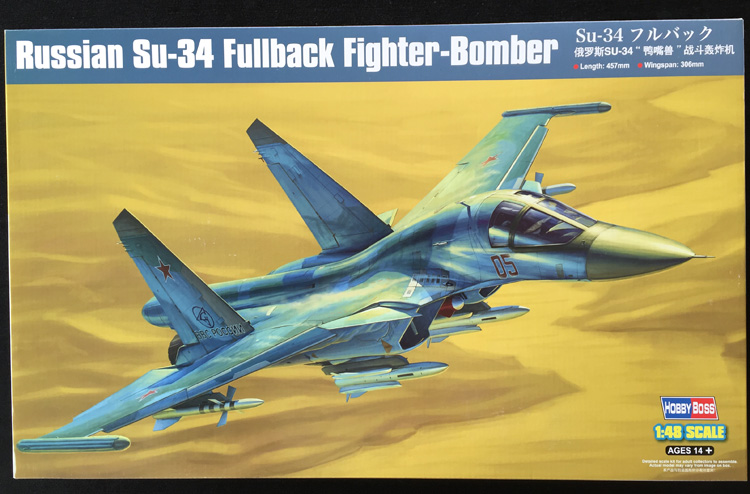
Full Review by Dave Coward
A note from Geoff…
I want to show you a couple of photos of Dave’s completed Su-34 right up front so that you can see that it does build into an impressive looking aircraft model. What follows is a full build so that you can see exactly how the kit goes together and, as usual, he’ll be offering plenty of tips and advice to help you build yours!
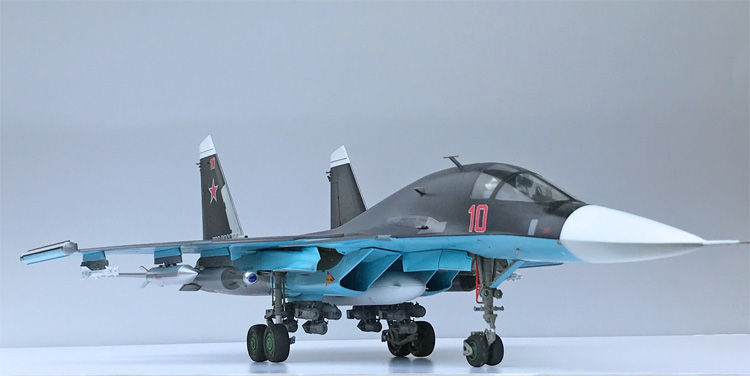
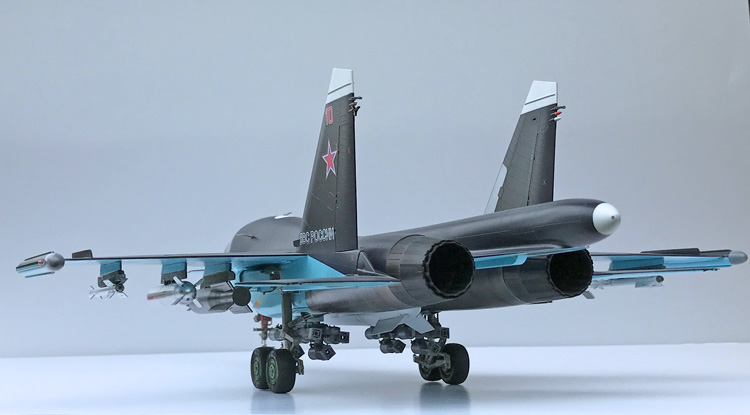
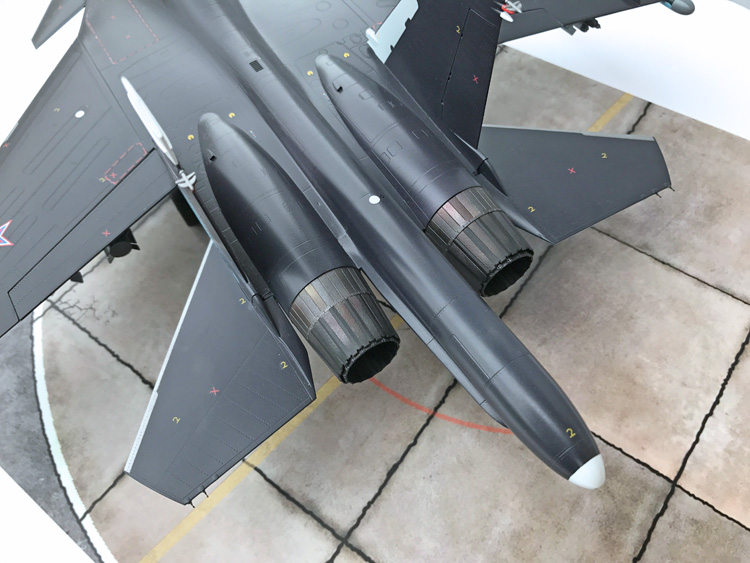
Over to you Dave…
Background
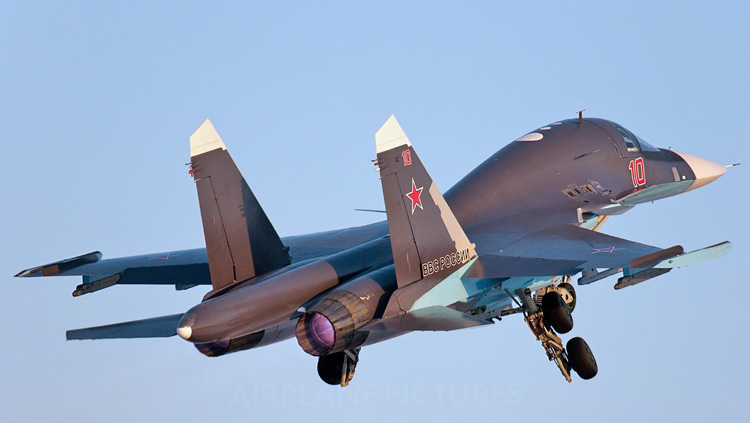
Courtesy of Wikipedia
The Sukhoi Su-34 (Russian: Сухой Су-34) (NATO reporting name: Fullback) is a Russian twin-engine, twin-seat, all-weather supersonic medium-range fighter-bomber. It is intended to replace the Sukhoi Su-24 and first entered service in 2014 with the Russian Air Force.
Based on the Sukhoi Su-27, two-seat Su-34 is designed primarily for tactical deployment against ground and naval targets (tactical bombing/attack/interdiction roles, including against small and mobile targets) on solo and group missions in daytime and at night, under favourable and adverse weather conditions and in a hostile environment with counter-fire and EW counter-measures deployed, as well as for aerial reconnaissance.
Development
The Su-34 had a muddied and protracted beginning. In the mid-1980s, Sukhoi began developing a new tactical multirole combat aircraft to replace the swing-wing Su-24, which would incorporate a host of conflicting requirements. The Bureau thus selected the Su-27, which excelled in manoeuvrability and range, and could carry a large payload, as the basis for the new fighter-bomber. More specifically, the aircraft was developed from T10KM-2, the naval trainer derivative of the Sukhoi Su-27K. The development, known internally as T-10V, was shelved at the end of the 1980s sharing the fate of Soviet aircraft carrier Ulyanovsk; this was the result of the political upheaval in the Soviet Union and its subsequent disintegration.
In August 1990, a photograph taken by a TASS officer showed an aircraft making a dummy approach towards the aircraft carrier Tbilisi. The aircraft, subsequently and erroneously labelled Su-27KU by Western intelligence, made its maiden flight on 13 April 1990 with Anatoliy Ivanov at the controls. Converted from a Su-27UB with the new distinctive nose, while retaining the main undercarriage of previous Su-27s, it was a prototype for the Su-27IB (Istrebitel Bombardirovshchik, or “fighter bomber”). It was developed in parallel with the two-seat naval trainer, the Su-27KUB. However, contrary to earlier reports, the two aircraft are not directly related. Flight tests continued throughout 1990 and into 1991.
In 1992, the Su-27IB was displayed to the public at the MosAeroshow (later renamed “MAKS Airshow”), where it demonstrated aerial refuelling with an Il-78, and performed an aerobatic display. The aircraft was officially unveiled on 13 February 1992 at Machulishi, where Russian President Boris Yeltsin and the CIS leaders were holding a summit. The following year the Su-27IB was again displayed at the MAKS Airshow.
The next prototype, and first pre-production aircraft, T10V-2, first flew on 18 December 1993, with Igor Votintsev and Yevgeniy Revoonov at the control. Built at Novosibirsk, where Su-24s were constructed, this aircraft was visibly different from the original prototype; it had modified vertical stabilizers, twin tandem main undercarriage and a longer “stinger”, which houses a rearward-facing warning radar. The first aircraft built to production standard made its first flight on 28 December 1994. It was fitted with a fire-control system, at the heart of which was the Leninets OKB-designed passive electronically scanned radar. It was different enough from the earlier versions that it was re-designated the “Su-34”. However, at the 1995 Paris Air Show, the Su-34 was allocated the “Su-32FN” designation, signalling the aircraft’s potential role as a shore-based naval aircraft for the Russian Naval Aviation. Sukhoi also promoted the Su-34 as the “Su-32MF” (MnogoFunksionalniy, “multi-function”).
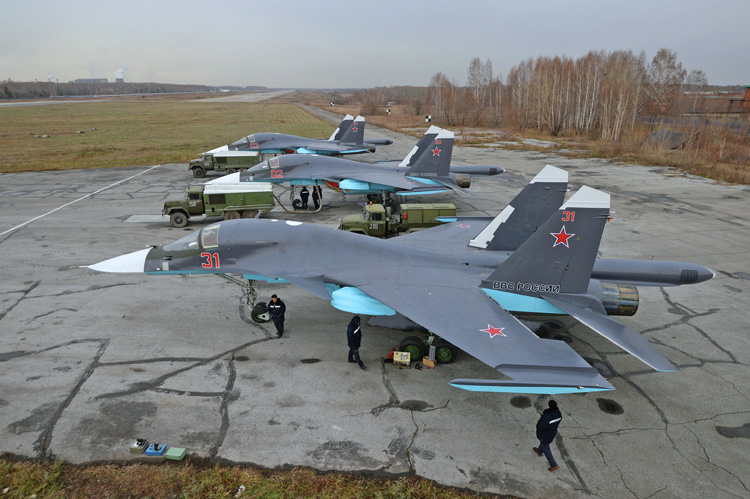
Budget restrictions caused the programme to stall repeatedly. Nevertheless, flight testing continued, albeit at a slow pace. The third pre-production aircraft first flew in late 1996.
Russia’s Ministry of Defence plans to modernize the Su-34; according to the deputy head of the military department, Yuriy Borisov, “We are planning to modernize the aircraft: prolong its service life, increase the number of airborne weapons. Plane is in great demand in our armed forces, and it has a great future.”